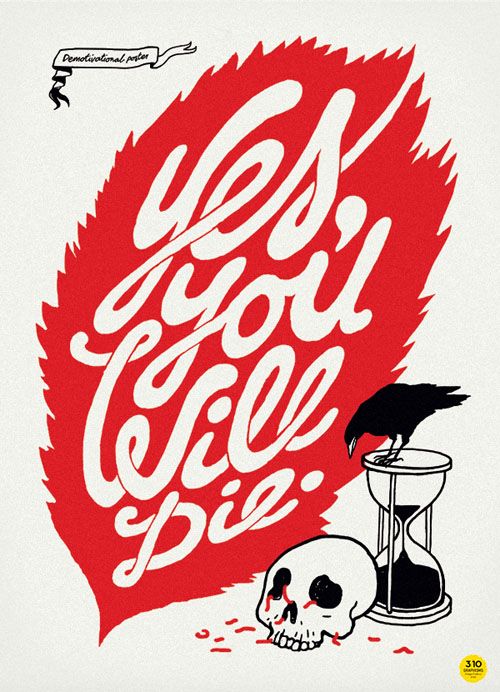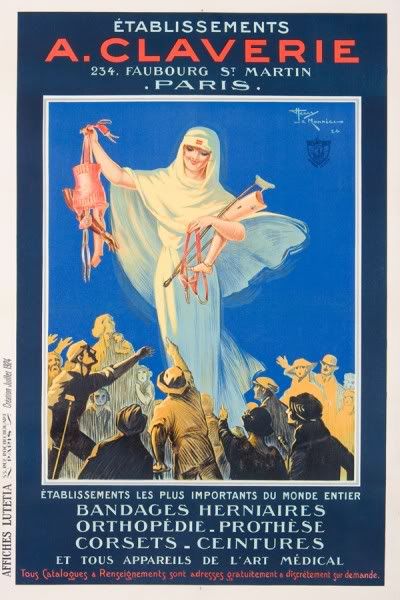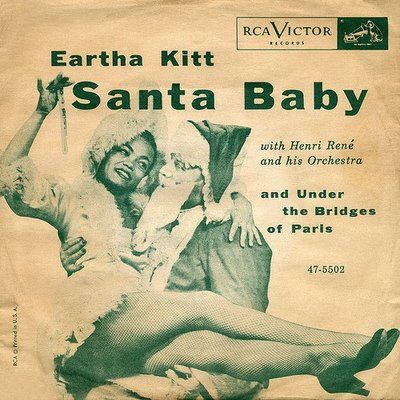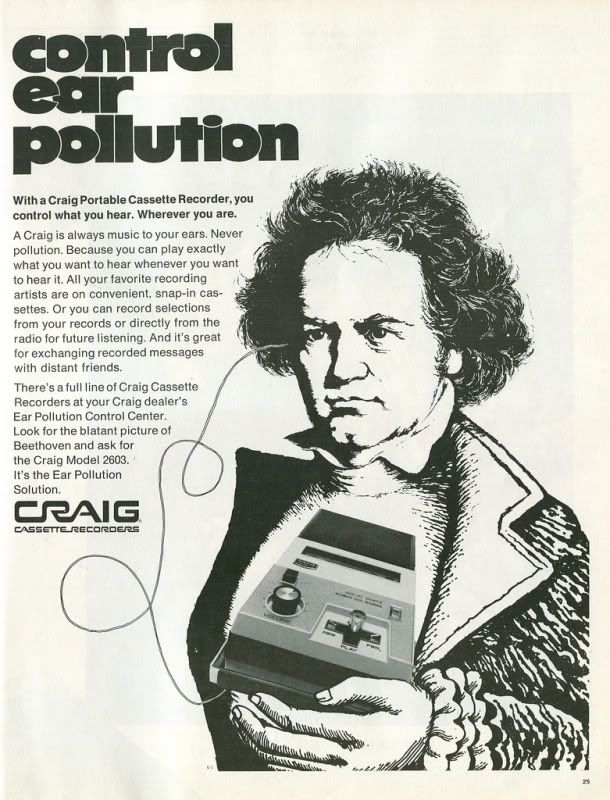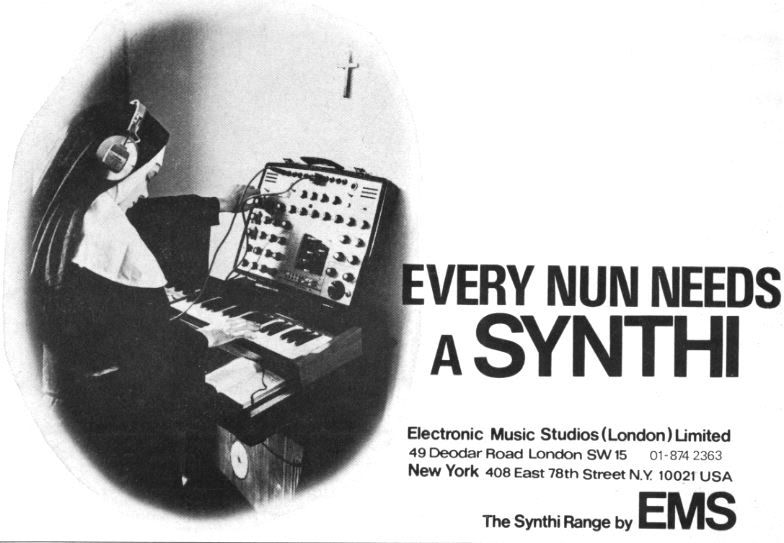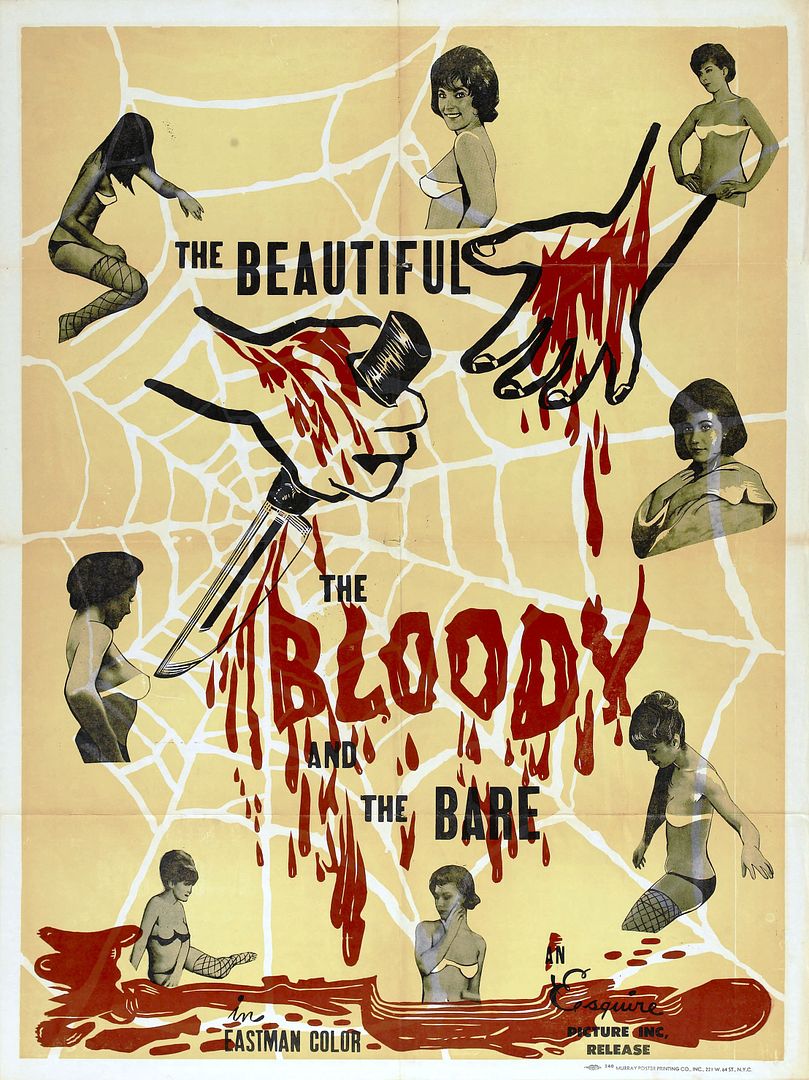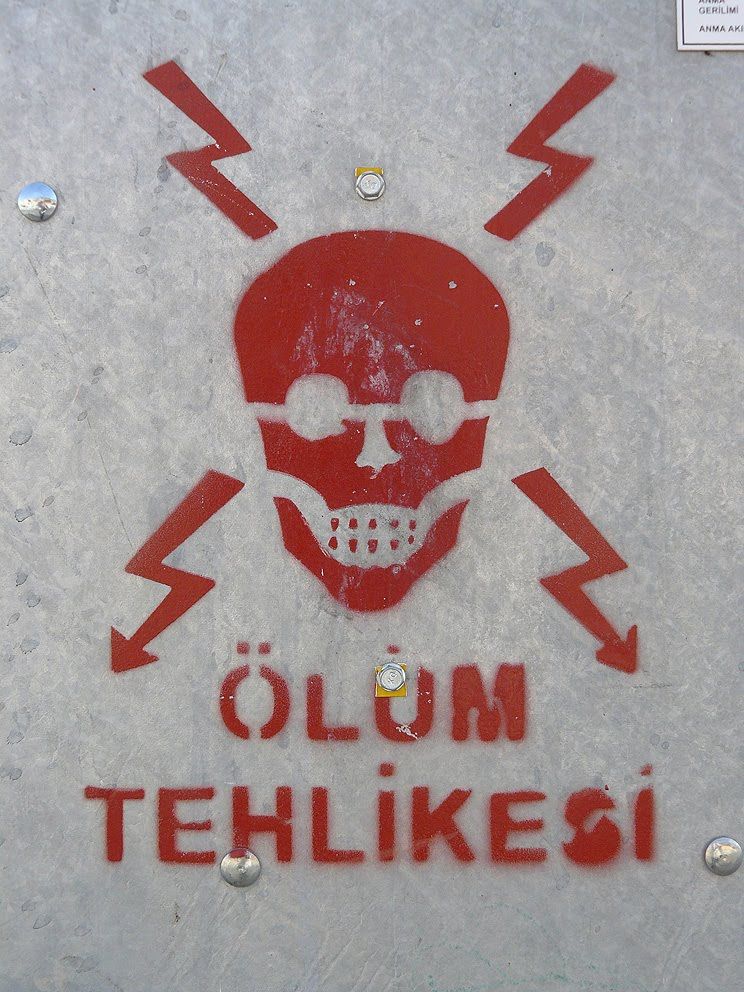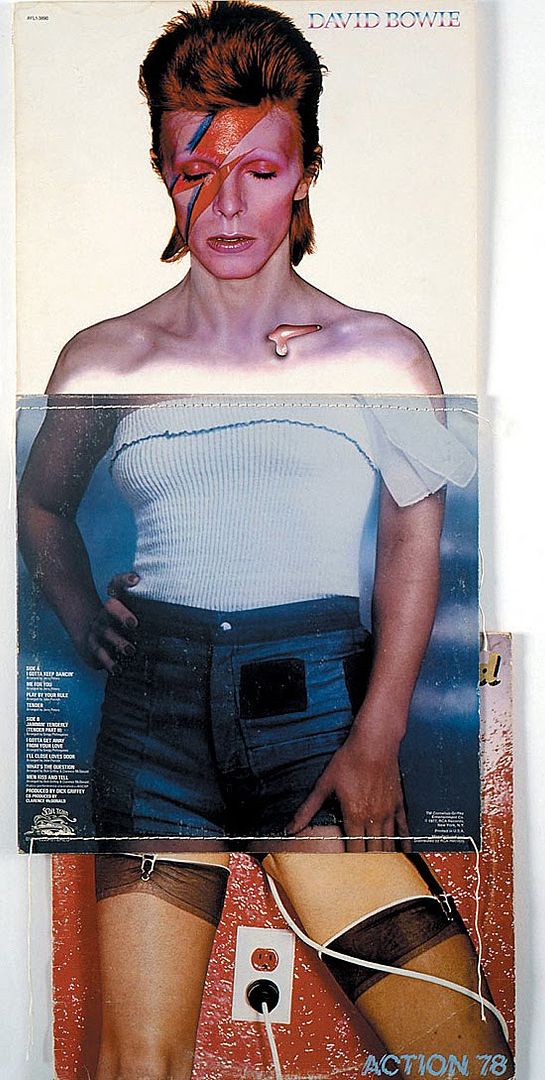
Thursday, December 31, 2009
langsyne, adv. (n.)
Sc.
Long since, long ago. Also n. esp. in auld lang syne. (Somewhat common in English use with allusion to Burns's song.)
1500-20 Dunbar Poems xxiv. 34, I had bene deid langsyne, dowtless. 1570 Satir. Poems Reform. xvii. 3 In eirth lang syne yair had been nothing than, Saif only vice. a1774 Fergusson Poems (1807) 309 Hame-o'er langsyne you hae been blithe to pack. 1788 Burns Auld Lang Syne, For auld lang syne, my dear, For auld lang syne, We'll tak a cup o' kindness yet, For auld lang syne. 1820 Scott Monast. iv, Like what I hae seen langsyne, when we dwelt at Avenel. 1841 Lytton Nt. & Morn. II. vii, A friend ... of the happy lang syne. 1870 H. Smart Race for Wife ii, In days lang syne.
Copyright © Oxford University Press
1 comments
Labels:
calendar,
OED
![]()
hogmanay, n.
Sc. and north. Eng.
[Of obscure history, noted only from 17th c. App. of French origin: see note below.]
The name given in Scotland (and some parts of the north of England) to the last day of the year, also called ‘Cake-day’; the gift of an oatmeal cake, or the like, which children expect, and in some parts systematically solicit, on that day; the word shouted by children calling at friends' houses and soliciting this customary gift.
c1680 [see b]. 1693 Scotch Presbyt. Eloq. (1738) 120 It is ordinary among some Plebeians in the South of Scotland, to go about from Door to Door upon New-Year's Eve, crying Hagmane. 1790 Gentl. Mag. LX. I. 499/1 Concerning the origin of the expression ‘Hagman Heigh’. Ibid., In ... Scotland, and in the North of England, till very lately, it was customary for every body to make and receive presents amongst their friends on the eve of the new year, which present was called an Hagmenay. Ibid. II. 616/2 On the last night of the old year (peculiarly called Hagmenai). 1792 Caledonian Mercury 2 Jan. (Jam.), The cry of Hogmanay Trololay is of usage immemorial in this country. 1805 J. NICOL Poems I. 27 (Jam.) The cottar weanies, glad an’ gay ... Sing at the doors for hogmanay. 1825 BROCKETT s.v. Hagmena, The poor children in Newcastle, in expectation of their hogmena, go about from house to house knocking at the doors, singing their carols, and [saying] ‘Please will you give us wor hogmena’. 1826-41 R. CHAMBERS Pop. Rhymes Scot. (1858) 295 The children on coming to the door, cry ‘Hogmanay!’ which is in itself a sufficient announcement of their demands. Ibid. 296 Cries appropriate to the morning of Hogmanay ... ‘Get up, goodwife, and shake your feathers, And dinna think that we are beggars; For we are bairns come out to play, Get up and gie's our hogmanay.’ 1827 HONE Table-Bk. I. 7 The Hagman Heigh is an old custom observed in Yorkshire on new year's eve. 1830 SCOTT Jrnl. II. 360 We spent our Hogmanay pleasantly enough. 1884 St. James's Gaz. 27 Dec. 6/1 Seasonable mummery ... was reserved for Hogmanay. 1890 Scott. Antiq. June 40 This is the sort of thing they used to sing as their ‘Hagmena Song’ in Yorkshire. 1893 HESLOP Northumb. Gloss. s.v., In North Northumberland the hogmanay is a small cake given to children on Old Year's Day; or the spice bread and cheese, with liquor, given away on the same day. 1897 E. W. B. NICHOLSON Golspie 100-108.
b. attrib. and Comb., as hogmanay cake, day, night, concert, song, etc.
c1680 in Law Mem. 191 note [Protest of the Gibbites] They solemnly renounce ... Pasch-Sunday, Hallow-even, Hogmynae-night, Valentine's even [etc.]. 1826-41 R. CHAMBERS Pop. Rhymes Scot. (1858) 295 A particular individual ... has frequently resolved two bolls of [oat]meal into hogmanay cakes. 1864 BURTON Scot Abr. I. v. 297 The eve that ushers in the new year is called in Scotland Hogmanay Night. 1897 Westm. Gaz. 21 Dec. 6/3 On New Year's Eve there is to be a grand Hogmanay concert for the special benefit of patriotic Scots in London.
[Note. Hogmanay corresponds exactly in sense and use to OF. aguillanneuf ‘the last day of the year, new year's gift, the festival at which new year's gifts were given and asked with the shout of aguillanneuf.’ Of this Godefroy gives many dialect variants and by-forms, as ang- aguillenneu, aguilloneu, aguilanleu, haguilennef, haguirenleu, haguimenlo, etc.; in mod.Fr. dialects it survives as aiguilan, guilané, guilanneau, in Normandy hguignettes, hoguinané, in Guernsey hoginono; it is found in Sp. before 1600 as aguilando, now aguinaldo, handsel, Christmas-box. Copious examples are given by Godefroy of the phrases ‘demander l'aguillanneuf’, ‘donner l'eguilanneu’, ‘petiz enffans qui demandoient aguillenleu le jour de l'an dernier’, ‘aller querant aguillenneu le dernier jour de decembre’, ‘comme jeunes gens ont accostumé a faire pour querir leur guillenleu’, which require only to be translated, with the substitution of hogmanay, to be vernacular Sc. expressions. Although the phonetic difference between aguillanneuf and the Sc. word is great, the Norman form hoguinané is much closer to hagmané, hogmanay, and it cannot be doubted that both the custom and the term are from the French.
The French term is explained by Cotgrave, 1611, as ‘au-guy-l'an-neuf [“to the mistletoe the new year”] the voyce of country people begging small presents, or new-yeares-gifts, in Christmas: an ancient tearme of reioycing, deriued from the Druides, who were woont, the first of Januarie, to goe vnto the woods, where hauing sacrificed ... they gathered Misletow’, (etc.). And according to Souchet I. 16 (in Godefroy) ‘With us (in la Beauce) people go on new year's day to their relatives’ and friends' houses, to solicit gifts, vulgarly called l'eguilanleu, pour le guy l'an neuf [for the mistletoe the new year], for that on this day they distribute mistletoe for handsel and as a form of good augury.’ But these explanations, with the reference to the gui or mistletoe, are now rejected by French scholars as merely ‘popular etymology’. The alleged Fr. cry ‘Au gui menez, tiri liri, mainte du blanc et point du bis’, cited second-hand in Jamieson, is not to be found in the French author from whom it professes to be quoted, and appears to be a figment.
Schuchardt (Romania IV. 253) suggests that Sp. aguilando, F. aguilanleu, guilanlé, etc., are corruptions of L. calendæ; see also Körting Lateinisch-romanisches Wbch. art. 324.]
Copyright © Oxford University Press
0
comments
Labels:
calendar,
OED
![]()
Tuesday, December 29, 2009
Monday, December 28, 2009
Saturday, December 26, 2009
Decade postmortem: 2006

My original list:
1. Cat Power, The Greatest
2. Joanna Newsom, Ys
3. Arctic Monkeys, Whatever People Say I Am, That’s What I’m Not
4. Gnarls Barkley, St. Elsewhere
5. Ali Farka Touré, Savane
6. Camille, Le Fil
7. Beyoncé, B’Day
8. Regina Spektor, Begin to Hope
9. Grizzly Bear, Yellow House
10. TV on the Radio, Return to Cookie Mountain
There wasn’t a huge amount to choose from in 2006, at least if you were looking in the usual places. The top sellers were High School Musical, Rascal Flatts, Carrie Underwood, Nickelback, Justin Timerlake and James Blunt. The Pazz and Jop winners were Dylan, TV on the Radio, Ghostface Killah, the Hold Steady and Gnarls Barkley, followed by Arctic Monkeys, Clipse, Neko Case, Joanna Newsom and a Tom Waits miscellany.
I liked some of those, but not all, and looking back I’m not overwhelmed with feeling for the music of 2006. I stand by The Greatest; never been a huge Cat Power fan but this one really got under my skin, and despite my initial ambivalence it remains very powerful. Beyond that there are a lot of decent records but not many killers. Joanna Newsom only came alive for me in concert, and anyway The Milk-Eyed Mender is more convincing. So I’m moving that down. Arctic Monkeys feels like a blip now, and aside from “Crazy,” Gnarls Barkley is more silly than great.
Other than The Greatest, the ones that hold up the best, in my view, are Camille, Ali Farka Touré and Grizzly Bear, so they’re all getting bumped up. I’m adding Justin Timberlake, which I’m not sure why I omitted three years ago, since I liked it then, too; it’s still dazzling, and while it doesn’t take itself seriously enough to really be called “visionary,” it certainly is futuristic. The other addition is Beirut, which now looks like a harbinger of the kitchen-sink multi-culti direction that indie rock was starting to go in, and Gulag Orkestar sums up the aesthetic with grace.
More comments: Camille’s Le Fil is an unrecognized masterpiece, a set of amazingly inventive vocal variations, Savane is spellbinding as Ali Farke Touré’s swan song (he died in early 2006), and Regina Spektor sounds pretty darn near perfection; Beyoncé is less strong but still fun enough to include.
Interesting that my original top 5 didn’t fare as well as the bottom 5. Why? No idea. Theories/challenges/rebuttals welcome.
So, here’s 2006 revised:
1. Cat Power, The Greatest
2. Camille, Le Fil
3. Ali Farka Touré, Savane
4. Justin Timberlake, FutureSex/LoveSounds
5. Grizzly Bear, Yellow House
6. Beirut, Gulag Orkestar
7. Regina Spektor, Begin to Hope
8. Joanna Newsom, Ys
9. TV on the Radio, Return to Cookie Mountain
10. Beyoncé, B’Day
Buncha ladies. That’s good.
My postmortems of 2007 and 2008 are coming next. I expect there will be less revision there since they’re more recent, but who knows. You can see my previous entries below, or, for those who are really lazy, here: 2000 and 2001, 2002, 2003, and 2004 and 2005.
(And 2009 is on its way, eventually.)
Friday, December 25, 2009
Thursday, December 24, 2009
‘But you were always a good man of business, Jacob,’ faultered Scrooge, who now began to apply this to himself.
“Business!” cried the Ghost, wringing its hands again.
“Mankind was my business. The common welfare was my business; charity, mercy, forbearance, and benevolence, were, all, my business. The dealings of my trade were but a drop of water in the comprehensive ocean of my business!”

UPDATE! Read about Dickens’ revision to this very passage right here, right now!
0
comments
Labels:
☠,
calendar
![]()
Wednesday, December 23, 2009
The folly of prediction
A little while ago I was asked what I thought might lie ahead for music in the 2010s, given all the retrospection of decade-end lists, etc. In answering the question it became clear how silly it is for anyone at all to predict the future. (Wall Street and Washington people, and everyone who relies on their wisdom, take note.) But it’s especially pointless for critics considering how consistently the pop pendulum has swung throughout the postwar era:
In 1950, it looked as though the future would be all crooners and soft, string-laden arrangements.
In 1960, it was clear that rock and roll was a passing fad.
In 1970, it was all going to be peace and love, and concept albums on 8-track.
In 1980, it was clear that disco would live forever, and that cassettes were the future.
In 1990, hair metal and CDs were indomitable.
In 2000, the industry was at its historic sales peak, boy bands were everything, and the Internet was a controllable nuisance.
So what are the inevitably wrong, blind-man-and-the-elephant predictions for the 2010s? Well: the industry will die, audiences will fragment further, and journalism will die. Smart money would say that at least one of those plain-as-day prognositcations will be dead wrong.
Why? For one, history is obviously not predictable; the black swan theory says that change tends to be led by unexpected anomalies. Also, pop is by its nature contrary and reactive; whatever the last generation liked, the next one rejects. Also, technology moves way too fast. Also, what are music critics ever right about anyway?
1 comments
Labels:
decade,
year end
![]()
Tuesday, December 22, 2009
Decade postmortem: 2004 and 2005
My original list for 2004:
1. Arcade Fire, Funeral
2. Franz Ferdinand, s/t
3. TV on the Radio, Desperate Youth, Blood Thirsty Babes
4. Kanye West, The College Dropout
5. Regina Spektor, Soviet Kitsch
6. Wolf Eyes, Burned Mind
7. Vietnam, The Concrete’s Always Grayer on the Other Side of the Street
8. Usher, Confessions
9. Modest Mouse, Good News for People Who Like Bad News
10. William Shatner, Has Been
In terms of how music is made and distributed, the early 2000s weren’t hugely different from the late ’90s. There were still megaplatinum albums (7.4 million for The Eminem Show in 2002, 6.5 million for Get Rich or Die Tryin’ in 2003), MTV still wielded the hitmaking wand, and the Internet was still more of a nuisance/question mark than the Third Horseman. (The iTunes store opened in 2003, to no small amount of skepticism.) But 2004 was the year things started to look truly transitional. It was actually a good year for album sales. They went up 2 percent in 2004, after slipping the previous three years. Usher’s Confessions was tops with a remarkable 7.9 million. After sweeping the Grammys and moving 5.1 million copies of Come Away With Me in 2003, Norah Jones continued to sell by the truckload: another 3.8 million in 2004. What could be wrong, right?
It was actually a good year for album sales. They went up 2 percent in 2004, after slipping the previous three years. Usher’s Confessions was tops with a remarkable 7.9 million. After sweeping the Grammys and moving 5.1 million copies of Come Away With Me in 2003, Norah Jones continued to sell by the truckload: another 3.8 million in 2004. What could be wrong, right?
In hindsight there were probably a million indicators of what would come, but here are two obvious ones: First, Danger Mouse’s The Grey Album, a big flaming copyright violation released online with no label. It proved that this crazy new distribution model could actually work, and while the labels were used to challenges from the consumer/pirate side, this one came from an artist. Second, the Arcade Fire. They scaled the peaks of blog hype, but their sales were still peanuts by biz standards. Lesson: the days of plucking a Kurt Cobain out of indie-rock are over. Consequence: the indies dry up as a farm league and spin totally out of orbit.
I think I was pretty dead-on with my list. Aside from a few position changes, the only change I want to make is to cut Vietnam, which made an impression on me at the time but hasn’t held; Joanna Newsom replaces it. Notes: Nix on The Grey Album, a curiosity that I never got much out of musically, although I recognize DM’s ingenuity. I’m also omitting U2, the Killers, Gwen Stefani, Interpol and Wilco for various reasons, the biggest that I don’t love the albums. And yes, the Shatner record is good!
What does all that biz analysis have to do with my favorites? Nothing. It’s just interesting.
So, 2004 revised:
1. Arcade Fire, Funeral
2. TV on the Radio, Desperate Youth, Blood Thirsty Babes
3. Joanna Newsom, The Milk-Eyed Mender
4. Kanye West, The College Dropout
5. Usher, Confessions
6. Franz Ferdinand, s/t
7. Regina Spektor, Soviet Kitsch
8. Wolf Eyes, Burned Mind
9. Modest Mouse, Good News for People Who Like Bad News
10. William Shatner, Has Been
And now for 2005. I don’t have much more to say about the biz or the larger culture. It was the year in which, despite everything, George W. Bush was sworn in for a second term, having won a decisive majority. Maybe it’s appropriate, then, that the best album of the year was an uncompromising, politicized cry from the third world.
My original list:
1. M.I.A., Arular
2. The Frames, Burn the Maps
3. Sons and Daughters, The Repulsion Box
4. High on Fire, Blessed Black Wings
5. Kanye West, Late Registration
6. Decemberists, Picaresque
7. White Stripes, Get Behind Me Satan
8. Fiona Apple, Extraordinary Machine
9. Keyshia Cole, The Way It Is
10. The Go! Team, Thunder, Lightning, Strike
I’m going to give myself the groupthink test on these — i.e., looking back after four years, which ones am I certain I was voting for out of love, and which might be the result of that invisible consensus peer pressure we were talking about earlier?
- Not a chance. Loved it, listened over and over.
- Nope. It didn’t even make Pazz and Jop.
- Ditto.
- Ditto, not that metal would make that list anyway.
- Some groupthink is inevitable, but to my 2009 ears it still sounds completely solid. And it’s amazing just how much of a fully-formed star Kanye was right from the get-go. He had years of practice with Jay-Z, Twista, Jadakiss et al., but none of those guys had the gumption to look into a live network TV camera and say, “George Bush doesn’t care about black people.”
- Probably some, but it’s easy to forget how fresh the Decemberists sounded in the first half of the 2000s. Picaresque is what their major-label debut should have sounded like; as I’ve said elsewhere, it got stale pretty fast after this point.
- Nah, check my other lists.
- Probably. It is an excellent album, though, and I have no regrets about including it.
- Nah, I fell for it all on my own. This one also didn’t make Pazz and Jop.
- Yeah, makes me wince. What can I say, sometimes you make a bad call.
So that’s pretty good, I think, overall. I’m cutting the Go! Team, as you might guess, but otherwise leaving my list pretty much intact.
For me, the big contenders I had originally excluded are: My Morning Jacket’s Z, Sufjan Stevens’ Illinois, Feist’s Let It Die, Spoon’s Gimme Fiction, Teenage Fanclub’s Man-Made, Amadou & Mariam’s Dimanche à Bamako, Wolf Parade’s Apologies to the Queen Mary, Van Morrison’s Magic Time, Lee Ann Womack’s There’s More Where That Came From, Teddy Thompson’s Separate Ways and Okkervil River’s Black Sheep Boy.
Of those, the only ones I have unequivocal feelings about are My Morning Jacket, Wolf Parade and Okkervil River. And I think MMJ wins out. Sorry, Sufjan, your big breakthrough was beautiful but a little too precious for me. Sorry, Feist, Spoon and Teenage Fanclub, I love you guys, but your albums were flawed. Sorry, Amadou & Mariam, you handed Manu Chao the keys. Sorry, Teddy, I still think you can better. Sorry, Van and Lee Ann, you made gorgeous records but they feel lost in time.
So, 2005 revised:
1. M.I.A., Arular
2. The Frames, Burn the Maps
3. Kanye West, Late Registration
4. Keyshia Cole, The Way It Is
5. Sons and Daughters, The Repulsion Box
6. Decemberists, Picaresque
7. High on Fire, Blessed Black Wings
8. White Stripes, Get Behind Me Satan
9. My Morning Jacket, Z
10. Fiona Apple, Extraordinary Machine
0
comments
Labels:
2004,
2005,
arcade fire,
best of,
decade,
ex post facto,
joanna newsom,
kanye west,
keyshia cole,
lists,
MIA,
sons and daughters,
the frames,
tv on the radio,
usher,
year end
![]()
Monday, December 21, 2009
The China overground
China Music Radar, a blog written by expat Westerners, has an interesting corrective post today. Western journalists (myself included) tend to focus on the “underground” rock scene, ignoring the robust pop world that dominates Chinese life. And I do mean pop: this is candied, light stuff that you hear in cabs, on TV, piped into Beijing’s glitzy shopping centers.
There aren’t a lot of opportunities for China’s punk- and indie-influenced rock bands, for fairly obvious reasons. But as with many industries in China, the pop market there looks like an advanced version of what’s going on in the West. Near-100 percent piracy killed physical sales long ago, which leaves pop stars to make money in other ways:
- reality TV
- endorsements
- gala performances (“the bizarre concept of taking X number of the hottest ‘stars’ at that moment and get all of them to perform/lipsync one song each for glowstick waving fans on national TV”)
Maybe I’m behind the times slightly, but I thought that mobile sale (ring-backs, etc.) are also a big revenue stream. Is that dead already?
0
comments
Labels:
china,
music biz,
the moneygoround
![]()
Decade postmortem: 2003

My original list:
1. Sparks, Lil’ Beethoven
2. Tall Dwarfs, The Sky Above, the Mud Below
3. Shins, Chutes Too Narrow
4. Fountains of Wayne, Welcome Interstate Managers
5. Kings of Leon, Youth & Young Manhood
6. Broken Social Scene, You Forgot It in People
7. Outkast, Speakerboxxx/The Love Below
8. Warren Zanes, Memory Girls
9. The High Strung, These Are Good Times
10. Grandaddy, Sumday
The big releases in 2003 were Outkast, Norah Jones, 50 Cent, Beyoncé, Linkin Park and Evanescence. The ones that turned up on the most critics’ lists were Outkast, the White Stripes (Elephant), Fountains of Wayne, Radiohead (Hail to the Thief), the Yeah Yeah Yeahs and the Shins.
2003 was a pretty great year for pop singles. There was “Hey Ya!” and “In da Club,” perhaps the two greatest hip-hop/pop songs ever. (And I mean pop: Not talking about “Straight Outta Compton” here.) It was also the year of “Crazy in Love,” the greatest of whatever that is. And “Seven Nation Army,” the White Stripes’ peak, the last moment before they began obsessively dismantling the formula they had created.
So with all of those wonderful pop hits, why did I pick Sparks and Tall Dwarfs? I don’t really know. To some degree I think it’s the contrary instinct: you know everybody else is going to pick the White Stripes and Outkast, so you go for a personal favorite and try to grab some cool points with something obscure. It’s kind of ridiculous, but everybody does it. Another reason is simply that you’re rating full albums, not singles.
And goddammit, Lil’ Beethoven really was the most entertaining album of the year for me. It’s full of bile and wit and stacked harmonies, with “classical” arrangements and the Sparks’ trademark opera-rock vocals (they did it before Queen), and the Mael brothers just ridicule everything they see: ostentatiously angry rock bands, the island of Ibiza, automatic phone hold-bots, “Ugly Guys With Beautiful Girls.” There’s no real point to it, no major relevance. But neither was there any huge point to The Importance of Being Earnest, and you damn well better believe that that would have topped my list in 1895.
Judging by some of my other choices, it seems that my mood in December 2003 was, “Fuck it, I feel like choosing these 10 albums right now, and I’m tired of thinking about it.” Call it PMS: pre makingalist syndrome. So Tall Dwarfs is good, but probably not No. 2 good. Warren Zanes and the High Strung, nah. Fountains of Wayne album has some nuggets but it’s no Utopia Parkway.
As for the other biggies, yes on 50 Cent and Beyoncé, both of which are so fantastic I really can’t account for their omission. Elephant also belongs here, bottom half. But I stand by my meh of Hail to the Thief, and while I think the Strokes’ second album is underrated, it’s not as great as, say, Grandaddy’s still-amazing Sumday. I don’t remember why I put Kings of Leon here, but I’m leaving it because I don’t have a good reason to take it off.
Revised:
1. Sparks, Lil’ Beethoven
2. 50 Cent, Get Rich or Die Tryin’
3. Grandaddy, Sumday
4. Shins, Chutes Too Narrow
5. Beyoncé, Dangerously in Love
6. Broken Social Scene, You Forgot It in People
7. White Stripes, Elephant
8. Outkast, Speakerboxxx/The Love Below
9. Tall Dwarfs, The Sky Above, the Mud Below
10. Kings of Leon, Youth & Young Manhood
I think that’s a pretty good list.
Next ... 2004!!!
1 comments
Labels:
2003,
50 cent,
best of,
beyoncé,
broken social scene,
decade,
ex post facto,
grandaddy,
kings of leon,
lists,
outkast,
sparks,
tall dwarfs,
the shins,
white stripes,
year end
![]()
Friday, December 18, 2009
Decade postmortem: 2002
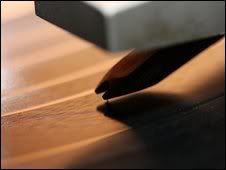
My original list:
1. Wilco, Yankee Hotel Foxtrot
2. Sonic Youth, Murray Street
3. Afel Bocoum, Damon Albarn, Toumani Diabaté and Friends, Mali Music
4. Spoon, Kill the Moonlight
5. George Harrison, Brainwashed
6. Breeders, Title TK
7. Low, Trust
8. Orchestra Baobab, Pirates Choice
9. Bright Eyes, Lifted or The Story Is in the Soil, Keep Your Ear to the Ground
10. Pulses, s/t
I don’t remember a lot about 2002, other than that the whole thing felt like a long, horrible countdown to the inevitable invasion of Iraq. And looking over the various critics’ lists from that year, there’s a lot of music that hasn’t aged terribly well. Critics aren’t to blame for that, but they’re to blame for brainwashing themselves into overpraising it. I’m sorry, but Beck’s Sea Change was a boring, ponderous exercise that deserved about half the stars that Rolling Stone gave it.
Then there’s Maladroit, Songs for the Deaf, In Search Of..., The Rising, One Beat, and ones by younger and supposedly fresher bands: Turn on the Bright Lights, Original Pirate Material. None of these hold up great: a lot of weak mid-career placeholders (Weezer, QOTSA; remember Red Hot Chili Peppers’ By the Way?), dutiful post-9/11 statements (Springsteen, Sleater-Kinney) and overhyped fads (fill in the blank).
BUT, there was indeed a lot that was good. White Blood Cells broke the White Stripes, and Kill the Moonlight still stands as one of the sharpest and most original statements of the decade. Springsteen gave us jingoism, but Sonic Youth dealt with the painful reverberations of 9/11 on a more personal and poignant scale, unexpectedly delivering their best since Daydream Nation. It’s slightly depressing, though, that 2002’s best album (Yankee Hotel Foxtrot) only came out that year because it had been delayed by an idiotic music-biz drama.
I think I did OK on my list but not great; I excluded a lot of the crap but still made a few iffy choices. I’m striking the Breeders and Low, and disqualifying my buddies the Pulses as a conflict of interest. Technically Orchestra Baobab shouldn’t count because it’s a reissue, but I can’t resist; it really is that magnificent. I’m also giving credit to A Rush of Blood to the Head — say what you will about Coldplay, it’s a very strong album — and I’m adding Salif Keita’s unbelievably gorgeous Moffou as well as a sentimental favorite, Sondre Lerche. Honorable mentions to Doves’ The Last Broadcast, Sigur Ros’s () and Hot Snakes’ Suicide Invoice.
So here’s my revised list:
1. Wilco, Yankee Hotel Foxtrot
2. Spoon, Kill the Moonlight
3. Sonic Youth, Murray Street
4. Orchestra Baobab, Pirates Choice
5. Coldplay, A Rush of Blood to the Head
6. Afel Bocoum, Damon Albarn, Toumani Diabaté and Friends, Mali Music
7. Salif Keita, Moffou
8. Bright Eyes, Lifted or The Story Is in the Soil, Keep Your Ear to the Ground
9. Sondre Lerche, Faces Down
10. George Harrison, Brainwashed
Tuesday, December 15, 2009
Decade postmortem: 2000 and 2001
UPDATES: I tweaked the 2000 list a bit and added an addendum to 2001.
Now is the time when the music critics of the world compile their lists of the best releases of the year, and, even more agonizing, of the decade. Actually, for most writers that time was a month ago. I always get to these late, cuz (1) I don’t usually have a pressing early deadline, and (2) I find it psychically impossible to look back on a year until at least the second week of December.
I’ll be posting my 2009 list soon. But while scanning through the best-of-the-decade cloud, I’ve also been reflecting on my own past choices. Every critic should be held up to the lasting wisdom of his or her old year-end lists. Anybody can pick 10 faves, but a good critic is supposed to have the insight to find quality amid the mediocrity, and to explain and contextualize it. The problem is that aside from a few obvious mega-masterpieces (Thriller, Nevermind, William Shatner’s The Transformed Man) no one knows what will stand the test of time, which is the only test that matters. As a result, the art of the year-end top 10 includes an embarrassing amount of guesswork, fanboy advocacy and consensus groupthink gone stupidly wrong.
In 2007 the Village Voice ran a brutal but very funny reckoning about its Pazz and Jop poll, which covers hundreds of critics each year. (New Times had recently bought the Voice and begun booting its staff, so the motivation might not have been purely journalistic.) Reviewing decades of old Pazz and Jop tallies, the new Voice found a lot of howlers. Our nation’s rock critics got Thriller and Nevermind right (phew), but otherwise came out looking only slightly smarter than Grammy voters. For instance, in 1991 P.M. Dawn was laughably overestimated at No. 5, while My Bloody Valentine’s Loveless only made No. 14 and Dinosaur Jr’s Green Mind No. 37. Those are two of the most important alt-rock albums of the ’90s, and it was pretty obvious at the time how big a deal they were. In 1995 Elastica was No. 5 but Ready to Die was shunted all the way down to No. 38. I think we know who killed Biggie Smalls!
Over the next week or so I’ll be reviewing my past lists to see how well they hold up, and revising them as needed. Feel free to take me to task, shout in solidarity, call bullshit. It can be tricky to define exactly what we’re saying with these rankings. The big question is whether they represent only personal affinity or are larger statements about artistic or cultural importance. I lean toward the former, although I think a critic isn’t doing his job unless the latter plays a significant part.
First up: 2000. I can’t find a list for that year; if I made one at all, it was informal. But with the benefit of hindsight, here’s the one I would (or should) have made:
1. Radiohead, Kid A
2. Webb Brothers, Maroon
3. High on Fire, The Art of Self Defense
4. White Stripes, De Stijl
5. Grandaddy, The Sophtware Slump
6. Sigur Ros, Agaetis Byrjun
7. Bebel Gilberto, Tanto Tempo
8. Outkast, Stankonia
9. Coldplay, Parachutes
10. Dead Prez, Let’s Get Free
I can’t deny Kid A, which stunned me when it came out. It was amazing that something so bizarrely beautiful went to No. 1. It’s a milestone in the history of weird music. It wasn’t a breakthrough exactly: it wasn’t the first “post-rock” album, nor was it really a major reboot for Radiohead (that was OK Computer). But Kid A continued and surpassed all the post-rock/electronica that had been bubbling up through the ’90s, when those sounds were new and revolutionary. And after a decade it still hasn’t been surpassed. Why? Because Radiohead made it look too easy. In the same way that 1,000 shitty lo-fi bands tried to fake being Pavement in the 1990s, 1,000 shitty post-rock bands tried to fake being Radiohead in the 2000s. It’s still happening, and that’s why Radiohead are still giants.
I also love the Webb Brothers, who reside in a different and less futuristic musical continent. These young sons of Jimmy Webb (“Wichita Lineman”) absorbed their father’s songwriting classicism and applied it to the druggy, debauched fast life in an epic concept album dripping with melody. (I originally had this in my 2001 list, but I believe the album came out in 2000. I can’t remember anymore.)
Following that, High on Fire’s debut was an instant classic of stoner metal, and De Stijl was the album that got the buzz going on the White Stripes. (I bought it at Midnight Records on 23rd Street; I hadn’t heard of them before, but it had one of those covers that guarantees something interesting.) Otherwise, I don’t have much to say about this list, other than that I remember being very struck by Dead Prez at the time, and that it took some time for me to make sense of Grandaddy; I probably would not have included them on this list if I had written it in December 2000, but now it seems essential to me. The Sigur Ros album had a complicated release history but it basically broke in 2000. (First major press mention on Nexis: announcement of NME Premier Awards nominees, Jan. 21, 2000.)
And now, 2001. Here’s the list I made at the time:
1. Spoon, Girls Can Tell
2. White Stripes, White Blood Cells
3. Lightning Bolt, Ride the Skies
4. Manu Chao, Proxima Estación: Esperanza
5. Radiohead, Amnesiac
6. Low, Things We Lost in the Fire
7. Moldy Peaches, Moldy Peaches
8. Webb Brothers, Maroon
9. Fugu, Fugu 1
10. Tortoise, Standards
I think I’m right about a lot of this. But there are two big, big albums I would need to add: Nick Lowe’s The Convincer and the Shins’ Oh, Inverted World. The Convincer has become a real favorite of mine; discussing it with Claudia Marshall on WFUV recently, I called it “the most tasteful album of the 2000s,” and I stick by that. It’s magnificently elegant and eloquent, the perfect sound for Lowe’s wry but still warm-hearted reflections on the follies of life and love. The Shins I don’t need to explain; it’s fabulous, and it gets me right there. What I will say in defense of this revision is that that both albums reached me too late because of 9/11, when my life shifted to constant fifth-gear mode for several months. (Lowe’s album was released on that day; the Shins came out earlier, but I don’t think I heard it until early 2002.)
Otherwise, it’s a fairly easy decision to remove Manu Chao and Tortoise, neither of which has held up terribly well for me, and as noted above Marooned is reassigned to 2000. More difficult to lose is the lovely and playful Fugu. It charmed me eight years ago and is still nice, but here in 2009 it don’t sound like such great shakes.
That leaves room to add two titles, and there are some prominent candidates: Bob Dylan’s Love and Theft, the Strokes’ Is This It, and Jay-Z’s The Blueprint. In terms of who made the best album, I think Dylan wins out, and as much as I might loathe the Strokes, I have to admit that Is This It holds up really, really well. It was also the year of Miss E ... So Addictive, but my frustration with Missy albums is that aside from two or three brilliant tracks they tend to get pretty boring.
So here’s my revised list for 2001:
1. Nick Lowe, The Convincer
2. Spoon, Girls Can Tell
3. The Shins, Oh, Inverted World
4. White Stripes, White Blood Cells
5. Lightning Bolt, Ride the Skies
6. Radiohead, Amnesiac
7. Bob Dylan, Love and Theft
8. Moldy Peaches, Moldy Peaches
9. The Strokes, Is This It
10. Low, Things We Lost in the Fire
Addendum: Teenage Fanclub’s Howdy, released in the UK in 2000, came out in the US in 2001. It’s gorgeously pastoral, and asks simple, honest and poignant questions about life and love. (Here is my review at the time.) If I were to put it in this list it would be between Nos. 3 and 4, but I don’t want to mess with it at this point.
Next up ... 2002!
3
comments
Labels:
2000,
2001,
best of,
decade,
ex post facto,
grandaddy,
high on fire,
lightning bolt,
lists,
nick lowe,
radiohead,
spoon,
the shins,
webb brothers,
white stripes,
year end
![]()
Saturday, December 12, 2009
Sick comics, 1968

Be sure to check the 101 hippie jokes, like “To a hippie, what is police brutality?” (“Getting slapped by a cop while trying to kiss him!”) and “Why did the Federal Government give aid to Haight-Ashbury?” (“They declared it a disaster area!”).
(Via, via.)
0
comments
Labels:
comics
![]()
Friday, December 11, 2009
Thursday, December 10, 2009
Wednesday, December 9, 2009
Tuesday, December 8, 2009
Monday, December 7, 2009
‘Basket Case’ redux!

I’m fascinated by the 1982 film Basket Case, and so is Alex Pardee, an artist whose work you may have seen on the Used’s album covers. I merely slapped up its poster and trailer, but Pardee has expressed his love by designing a new poster in tribute, which you can buy in a 24” × 36” signed and numbered screen print for $30.
He’s also done posters for Blacula and The Terminator, as well as these pretty awesome T-shirt designs rendering the names of legendary directors in perfect 1980s metal style, for $24:


1 comments
Labels:
CHUD studies,
loving tributes,
posters,
VHS youth
![]()
Saturday, December 5, 2009
Press release of the day: Longest headline ever
Friday, December 4, 2009
Thursday, December 3, 2009
Wednesday, December 2, 2009
Ninth Avenue: Wow

Notice that someone removed a letter at the end of “serve,” and then still added the D.
0
comments
Labels:
NYC,
photos
![]()
Tuesday, December 1, 2009
Playing Grim Reaper
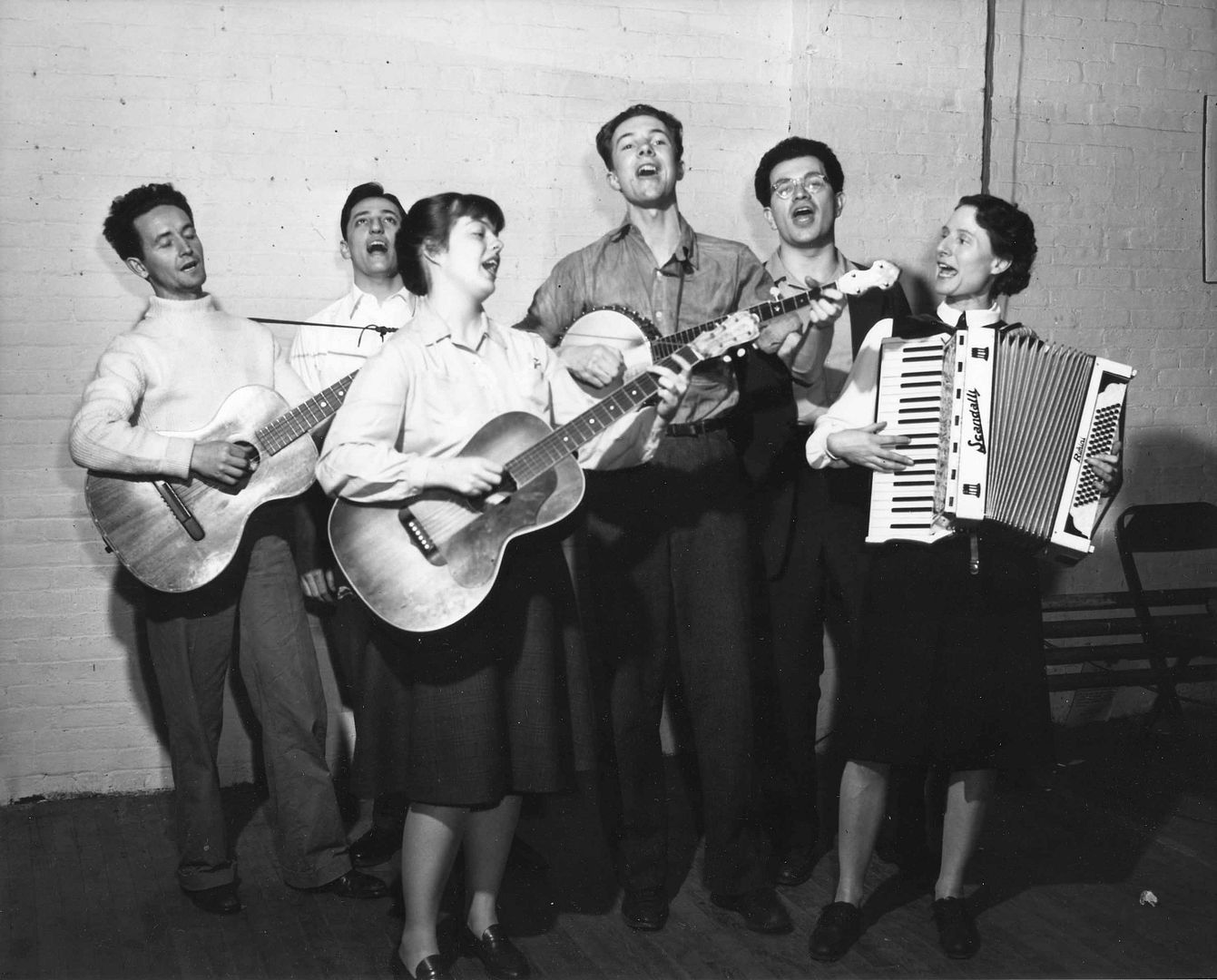
It can be weird. Yesterday I wrote an obit for Bess Lomax Hawes, daughter of John A. Lomax and sister of Alan, herself a folklorist as well as a performer. She was in the Almanac Singers with Pete Seeger and Woody Guthrie, and co-wrote “M.T.A.” (a.k.a. “Charlie on the M.T.A.”), a hit for the Kingston Trio that became the semi-official theme song of the Boston T.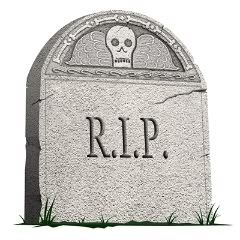 After writing it, I was told that I had now buried two people in the above photo, which shows the Almanacs circa 1942: five years ago I did Sis Cunningham (at right, on accordion; Bess is on guitar). Until I was reminded of this by the amazing Jeff Roth, I had no memory of it whatsoever. Most people in that picture are now dead. From left to right: Guthrie, died 1967; Millard Lampell, died 1997; Bess; Seeger, alive and kicking; Arthur Stern, status unknown; and Cunningham, died 2004.
After writing it, I was told that I had now buried two people in the above photo, which shows the Almanacs circa 1942: five years ago I did Sis Cunningham (at right, on accordion; Bess is on guitar). Until I was reminded of this by the amazing Jeff Roth, I had no memory of it whatsoever. Most people in that picture are now dead. From left to right: Guthrie, died 1967; Millard Lampell, died 1997; Bess; Seeger, alive and kicking; Arthur Stern, status unknown; and Cunningham, died 2004.
It’s as much an honor to have done this as it is somewhat creepy, and it’s also one of those you-ain’t-a-kid-yourself-anymore moments. Last year around this time I realized that I had obited two-thirds of the Jimi Hendrix Experience. So watch out, Michael Rother.
1 comments
Labels:
‘folk’ music,
me,
obits
![]()
